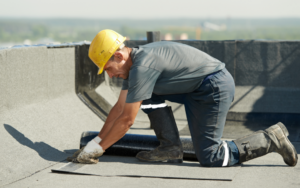What is the Depreciation Life of a Commercial Roof Repair?
When it comes to managing commercial properties, understanding the financial implications of maintaining and repairing a roof is crucial. One key aspect of this financial management is the depreciation life of a commercial roof repair. Depreciation is the process by which the value of an asset decreases over time due to wear and tear, usage, and other factors. For commercial property owners, knowing the depreciation life of a roof repair can help in budgeting, tax planning, and long-term property management.
The depreciation life of a commercial roof repair is determined by various factors, including the type of repair, the materials used, the overall condition of the roof, and the specific accounting practices of the business. Generally, the Internal Revenue Service (IRS) provides guidelines for the depreciation of commercial property, including roofs.
Under the IRS Modified Accelerated Cost Recovery System (MACRS), most commercial roofs fall under the 39-year property category, meaning they are depreciated over 39 years. This long depreciation period reflects the expected useful life of a new commercial roof. However, roof repairs are treated differently. Repairs that do not significantly add to the property’s value or extend its life are typically considered maintenance expenses and can be deducted in the year they are incurred.
For more extensive repairs or improvements that enhance the roof’s value or extend its useful life, the IRS may require these costs to be capitalized and depreciated over time. The depreciation life for these capitalized repairs or improvements is usually shorter than that of a completely new roof installation. Typically, significant repairs or partial roof replacements might be depreciated over 15 years, aligning with the IRS guidelines for qualified improvement property (QIP).
It is important to distinguish between routine maintenance and substantial repairs or improvements. Routine maintenance includes activities such as patching leaks, replacing damaged shingles, membranes or tiles, and minor repairs to the roof’s structure. These activities are necessary to keep the roof in good working condition and can usually be expensed immediately. On the other hand, substantial repairs or improvements might involve replacing a large section of the roof, upgrading to higher-quality materials, or adding new features that extend the roof’s lifespan or improve its functionality. These improvements must be capitalized and depreciated over the appropriate period.
The condition of the existing roof also plays a significant role in determining the depreciation life of a repair. If a roof is nearing the end of its useful life and requires significant repairs, the cost of those repairs may need to be spread over a shorter period. Conversely, if the roof is relatively new and the repairs are minor, the depreciation period may align more closely with routine maintenance schedules.
Accounting practices and the specific policies of a business can also impact the depreciation life of a commercial roof repair. Some businesses may choose to adopt more conservative depreciation practices, spreading the cost of repairs over a longer period, while others may opt for a more accelerated depreciation schedule to reduce taxable income in the short term. Consulting with a financial advisor or accountant who specializes in commercial real estate can help property owners navigate these decisions and ensure compliance with tax regulations.
In addition to IRS guidelines, other factors such as local building codes, industry standards, and the expected performance of roofing materials can influence the depreciation life of a commercial roof repair. For instance, certain roofing materials like metal or TPO (thermoplastic polyolefin) membranes may have different expected lifespans and associated depreciation schedules compared to other traditional roofing materials.
Understanding the depreciation life of a commercial roof repair is essential for effective financial planning and property management. By accurately accounting for these costs, property owners can make informed decisions about maintenance, repairs, and upgrades, ensuring the longevity and performance of their roofing systems. Properly managing the depreciation of roof repairs not only helps in budgeting and tax planning but also contributes to the overall financial health and value of the commercial property.








